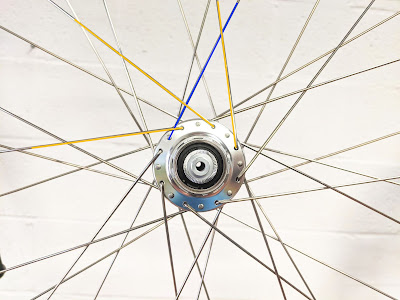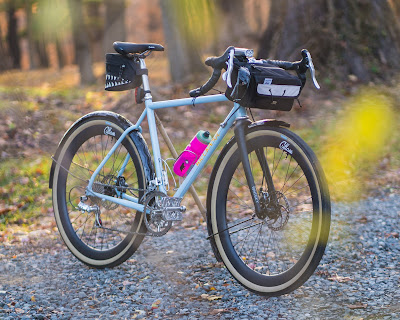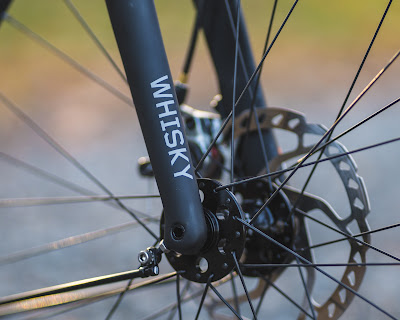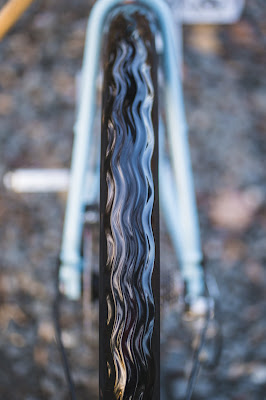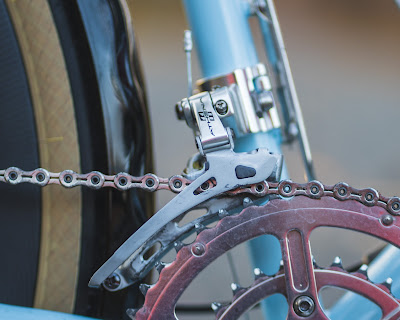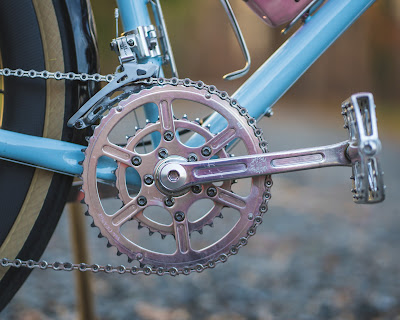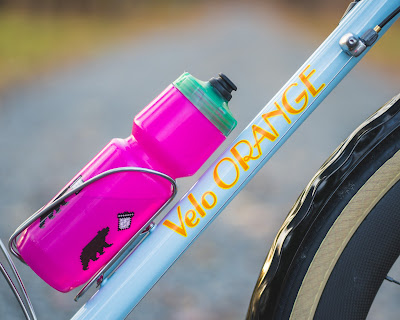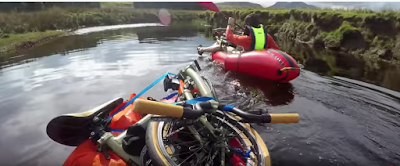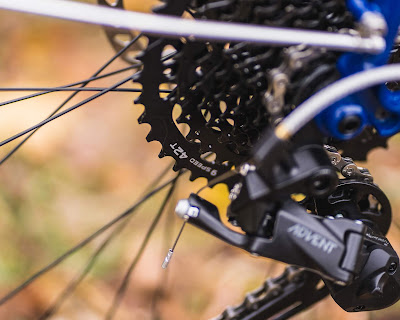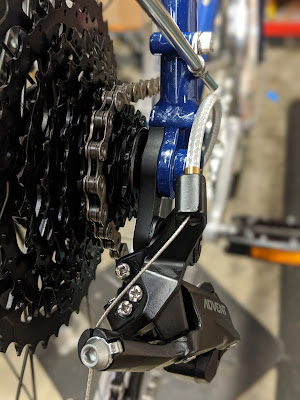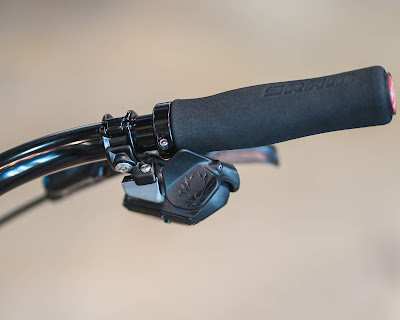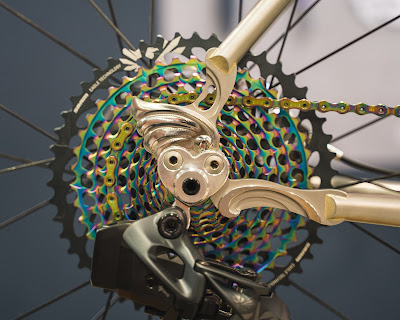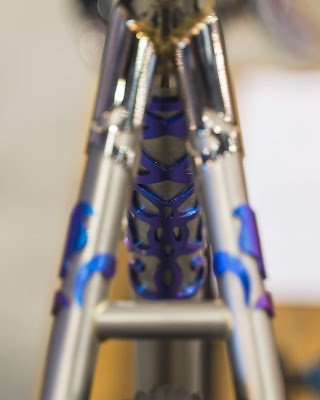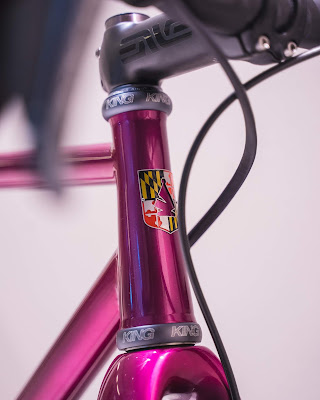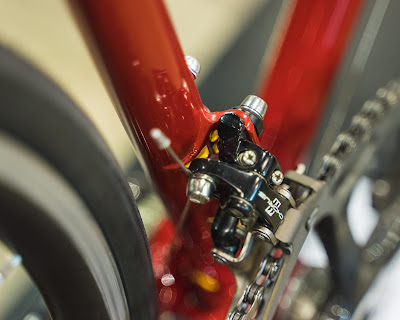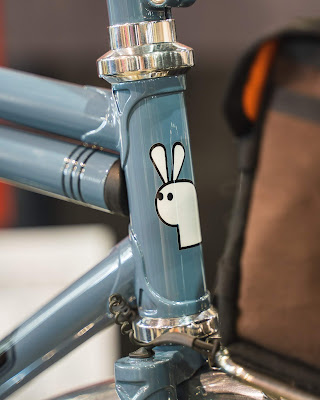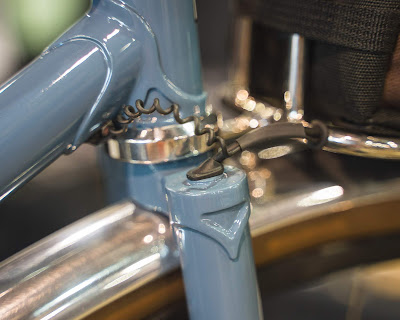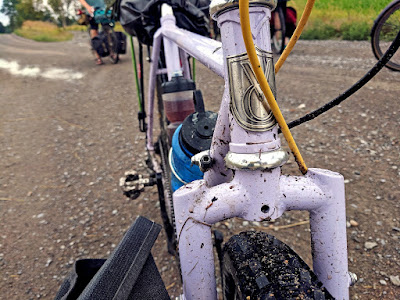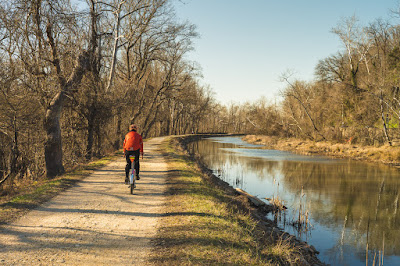The C.O.L.T. (Central Ontario Loop Trail) with N + 1 Cycle and friends
Pre trip
The obligatory group chat before any adventure is always a great way to get stoked. Ask your friends stupid questions, compare your kit and preparedness with fellow riders, and discuss all of the things that could go wrong. Do we really want to try and wild camp that night? Aren’t showers …nice? How much water do we need to carry? No matter how much you prepare, there is always a naivety felt when you look back once the trip is over. The unforeseen challenges of a trip through new territories are always a surprise. Fast forward to the end of the final day, crusty and dusty back in the parking lot at Ganaraska Forest Centre, most of us said it was an epic adventure, but, we probably didn’t need to do it again, ever! Nearly 7 months later, under COVID-19 lockdown, and I am raring to go (and finally writing about it). Type two fun was had. My body has forgotten the discomfort and only remembers beautiful Canadian scenery, buds on bikes, fireside evenings, and sweet trails that I had never ridden anything like before.
My love of multi-day touring by bicycle started in Ontario, but this was my first truly off-road tour, and I could hardly wait. We largely had Jason to thank for all of the planning and route research. Jason Hallows and Dickson Bou co-own
N+1 Cycle in London, ON together. They contribute to a small and awesome cycling community in the city, running taster overnighters for beginners, and generally supporting people on their forays into the world of cycle touring. This was a trip among friends. The COLT stands for Central Ontario Loop Trail, and is a 400ish km loop that lies in between Algonquin Park and Lake Ontario. A series of old back roads, rail trails, ATV and snowmobiling tracks, it was a proposed Tourism Ontario initiative back in the day, but was never developed. There are already a few great resources detailing the loop out there, including write-ups on Bikepacking.com and Bikepack Canada. These blog posts document journeys ridden on either fat bike rigs and/or plus sized tires. 2 of us had 26er 2.1” mountain bike tires, and the rest of us sported 650b wheels with tires ranging from 42-48mm on vintage touring bikes outfitted as best as possible for the task. Jason and Dickson were both riding Wake Robins, N+1’s very own handmade steel bicycle frames. I had the pleasure of riding a Velo Orange Polyvalent from the N+1 showroom, more on that later. We were a group of 8. Jason and Dickson from N+1, friends Mitch, Marc, Wyatt, Nate and Jay (brothers), and myself.
Day 1 - Ganaraska Forest to Presqu’ile Provincial Park (90kms)
We started in Ganaraska Forest, which I have since learned is home to one of only three IMBA Canada designated ‘EPIC’ Mountain Bike Trails (Paul’s Dirty Enduro), and certainly the only one in Ontario. Pretty cool! After an early 3 hour drive from London, we were all gathered in the parking lot of the Forest Centre, where we had got clearance to leave the cars.
We loaded up the bikes, securing the set ups we would live with for the next 5 days, and set off towards Lake Ontario. Before we would reach the lake, we would endure what could only be described as a rude awakening in the form of a 10km stretch that made us question the entire feasibility of the trip. After taking to some dirt roads, the ‘dirt’ turned to gravel and the gravel turned to a variety of loose stones and gnarly roots. Technical climbs in dense wood had most of us pushing our bikes, with fleeting moments of successful pedaling. Then the sand came, and we were soon hub deep in some thick, sandy double track in direct sun, pushing the pedals and trying to stay vertical. Landings were soft and graceful on the sand, at least. We were on ATV tracks, and every now and then one would whizz by our sorry souls. We would catch our breath on peaks, looking wide eyed at one another. What if the entire loop is like this? How far have we gone? 10kms? Oh dear. We were then presented with a marshy ‘trail’, a long forgotten kilometre stretch that was barely trackable, definitely not rideable, obstructed by fallen tree after fallen tree. We contorted our bodies over and under trees and overgrowth, hauling our bikes along with us, and being feasted upon by carnivorous insects in this shady, unending trench. Morale was tested straight off the bat, to say the least. We finally came across more forgiving gravel trails, and soon enough we arrived at Port Hope, our first town on the shores of Lake Ontario.
An LCBO (beer!) stop and a glorious visit to Olympus Burger (delicious!) before we continued on mixed roads and trails through pleasant lake side cottage country. Eventually passing by Cobourg, and then Colborne, with short rides along the shore every now and again, we made it to Presqu’ile Provincial Park. All Ontario Parks feel like home to me. The same ‘comfort’ shower stations, picnic tables, and iron fire pits with overhanging grills. We got to setting up camp, cooking our food, and cleaning ourselves up. The moment I realized that Wyatt and I had brought the wrong tent poles for our tent, I had never needed a cold beer so much in my life (I didn’t have one). The camp store only had a giant 10 man tent for sale, and the poles we did bring were for a much, much, smaller tent. Sleeping in the open air is just not an option without netting, for those who have not experienced the hungry winged creatures of North America before.
With a little help from our friends, and strategically arranged guy lines, paracord, tree branches, and tent pegs pulling at the right angles, we had something we could sleep in for the night. Thank god it wasn’t windy. We would revisit the problem tomorrow. I have not yet mentioned that our dear friend Nate had not been doing so hot on this day. He crawled into his tent early on, not to be seen again until morning, poor Nate. We thought it might be heat sickness. One by one, everyone retreated to their tents from the communal fire (I’m pretty sure we had s’mores that night), to sleep off the first day and rest up for tomorrow.
Day 2 - Presqu’ile Provincial Park to Marmora (70kms)
We woke to a sunny morning on Lake Ontario. The droopy tent survived the night, and after some camp breakfast we were ready to hit the trails. Nate did not feel better and decided that he didn’t want to risk continuing with us and needing to bail out in a more remote area. We were all sad to see Nate go, but he did loan us his tent, so that was our tent problem solved, thanks Nate. Today we would see rail trails galore, some bits of the Trans Canada Trail, and our first introduction to the Old Hastings Colonization Road. Our use of this Hastings County Trail is the biggest difference between our route and the route that Miles Arbour first outlined on Bikepacking.com. This day was full of crossing expanses of indeterminately deep water, the kind you can’t bike through.
We were stopping, some were changing shoes, and then pushing through the water. Saving the cycling shoes from a watery state by taking them on and off got old, fast. Some surrendered them completely, while others opted to ride sections in water shoes (Dad-level Keens for me), or even Crocs. We weren’t all clipless folks either, certain dirtbags among us were sporting Vans and Converse on this trip. There were countless water-filled craters in between the big‘uns and along one muddy stretch of canal system the meandering and circumventing became trance-like. We stopped canal-side for a foot wash and a fender scrape (for those who had them). Nate texted us, through intermittent service, reporting that it was absolutely pouring at Presqu’ile. At one point, Jason had a great launch over the handlebars when his front pannier caught a ridge while navigating around one of these puddles, leaving a near-perfect imprint of the brim of his cap in the ground. No one actually witnessed how this happened. Thank goodness for that helmet.
We were tired when we reached the vista at Marmora Mine. We picked up food in Marmora before heading to our campsite. The LCBO (Ontario Liquor store) was closed by the time we arrived so we were in for another dry night. But not that kind of dry--by now the rain that Nate had warned of had caught up with us and it was a drizzly old evening. Once we got to the Heritage Trail Campground, we set up a tarp to cook and congregate under while it rained. Some of us though, went straight to sleep. This was unlike any trip we had done together, a lot less booze, and a lot less campsite leisure time, so far.
Day 3 - Marmora to Bancroft (88kms)
Camp coffee and fuel had us in good spirits and ready to take on the day. The stretch between Marmora and Bancroft, we knew, would be the day with the least amenities (almost none). We stocked up for the day in Marmora and made sure to fill all water vessels.
We continued on the Hastings Heritage Trail, and old Canadian logging roads that would take us the furthest north we would reach on the trip. The puddle crossings continued and the roads seemed somehow rougher, and less traversed, carved out by old logging activity a long time ago. We passed through the famous ghost town of Glanmire, an old settlement existing from between 1856 to the 1950s. An earlier version of the route had us wild camping here at what used to be called Jelly Rapids on night two, a push we would not have had in us yesterday. At one point we came to a crossroads with a neat stone house with the name ‘Hogan’s Hotel’, an old hotel built around 1860, and now a private residence.
It turned out that the residents were friendly, as they let us refill our bottles with their hose. We stopped here long enough to lay out our damp tents in the sun, and left when it began to drizzle. Running out of water is always a little stressful, and during this hot and humid stretch some of us did. Although we were in a relatively safe situation, and had just enough water to share, it still felt a little dire at times. We avoided ‘hangry’ territory by reminding each other to eat (sometimes too late). Turns out a peanut butter sandwich can save a boy’s life (special thanks to the only parent on the trip). In the last push to Bancroft, I distinctly remember crying out “I’m hitting a wall!” while wearily continuing to push my pedals as I fell to the back. While we each took turns having our hardest days, this was definitely mine.
When we got to Bancroft we went straight to the grocery store, with the LCBO closing in minutes. Another beerless night seemed cruel. Mitch and Wyatt were determined to beat closing time. The LCBO sat on a hill, looking like a beacon at the top. With the low sun hanging just beyond, I followed, cheering after them as they sprinted up to the shop. We did make it, and we delivered cold beers for all that night. What a feeling. The park owner was friendly and welcoming at the quaint and lovely Riverbend Trailer Park. The tent pitches were right on the riverbank, and we had it all to ourselves. We swam to wash away the day. The shower and bathroom facilities were especially cute, channelling a Grandma’s basement aesthetic. It was a crisp and starry night, free of light pollution. We all marveled at the trip thus far, and the state of our bodies, around the fire and into the evening.
Day 4 - Bancroft to Burnt River (115kms)
We woke up to enjoy a sunny breakfast while packing up camp.
Leaving Bancroft we were presented with our first considerable section of tarmac. We hadn’t endured much climbing yet, and we were met with long rolling hills surrounded by rocky Canadian Shield. It felt weird to ride in a straight line again, following a wheel, taking turns on the front, and communicating about speed. On one lively descent, Mitch’s back tire wall blew. It turns out it had been discreetly rubbing away on his brake. With a loud bang and some adrenaline bike handling that saved his life, we were road-side. Thankfully touring veteran Jay had the foresight to pack an extra tire. We had earned ourselves a food break, and stopped at a place called The South Algonquin Diner. We ate ourselves full and felt it on the remaining climbs.
It had been raining on and off at this point, and we were dreaming of flat ground. After about 50kms of road we were relieved to join up with the IB&O Rail Trail (Irondale, Bancroft and Ottawa Railway). I realize that I haven’t really mentioned the bugs. I think this is because they were such a constant and anyone familiar with this part of the world already understands. At any given time you can rightfully imagine a swarm of black flies and deer flies drafting just behind your back as you cycle, waiting for you to stop or even just slow down. We were all bitten, and gleaming with a layered mix of bug spray, sunscreen, and sweat. We discovered a pretty spectacular waterfall just to the side of the trail. We climbed down for a scenic snack before plodding on.
The trail led us to Gooderham, a nice little town whose local library washroom made a good pitstop. We were not done climbing. The sun was out and we came across some pretty relentless sandy rollers that had us sweaty and breathless.
We went through what Jason had marked on the map as potential Crown Land for wild camping but showers were calling us. The trail took us past Burnt River and right to our campground for the night. Log Chateau Park was probably the most luxurious place we stayed, they had a pool, and really nice showering facilities. We cracked a tall can and gathered around the fire one last time, recounting the events of the last few days.
Day 5 - Burnt River to Ganaraska Forest (75kms)
After a good night’s rest we had a relaxed morning. We geared up for one last day in the saddle, it was kind of hard to believe. We headed back out on the Victoria Rail Trail southbound. It wasn’t long until we were alongside Cameron Lake, a picture perfect example of the many beautiful lakes in the Kawartha area. At Fenelon Falls, we stopped for pizza and ice cream at a place called Slices ‘n Scoops. We lounged on the grass near the lock system there, watching different boats move through.
It is true that you can ask to camp at lockstations, at the discretion of the lock master, for a fiver. It was sporadically sunny, with some mean looking clouds never too far away. We crossed the bridge over the Trent-Severn Waterway, which we would continue to follow. There was a plea (demand) for an emergency pharmacy stop to buy painkillers. Some of us were feeling the accumulation of the five days. We spent most of the day on the Victoria Rail Trail, passing through more cottage country and waterfront property.
We hit some pretty chewed up ATV track as we entered back into the outskirts of Ganaraska Forest. It was the final push to the end, and we’d get one last taste of COLT grit. Suddenly day one’s legendary first 10kms came back to us with a shudder. It never got quite that bad, but we did celebrate that we had not decided to reverse the loop as that gnarly chunk would have destroyed us now. After zipping along some country lanes back towards the Forest Centre, our tuckered bodies rolled into the parking lot where we had left the cars 5 days earlier. Climbing off of the bikes knowing we had completed what we set out to do was marvelous. Sitting around and licking our wounds, a young man in a pickup truck drove up to us waving. He stopped to chat saying that he was glad to see us as he had been watching the cars for several days, worried that he might need to alert the authorities. We were glad he didn’t do that. We secured our filthy bikes to the cars and drove back towards civilization to share the glory of the COLT.
Post trip
The COLT felt like my biggest feat on a bicycle when I was riding it. It certainly created some unforgettable memories for all of us, and binded us as a riding group. I would definitely do it all again, though I think many would opt for an extra day or two in there to get it done. What I wouldn’t change though is the bike that I was riding. It was quite a way to get acquainted with a bike. Knowing going into it that most people before us had used fat bikes, I must admit, I had thought to myself--it can’t be that bad. On reflection, I can totally see that a fat bike would have been a solid and appropriate choice. The VO Polyvalent that N+1 Cycle had built up for the trip was a versatile and fun bike for the job.
With a 1x SRAM system and 26ers with 2.1” Maxxis Crossmarks I was able to roll over anything. I’m a wee lass, and even with the bike fully loaded, I still felt like I had a good degree of handling control. It would have been nice to have a bit less stuff, but then comes the old reevaluation of what is necessary and what is comfortable. The Polyvalent has the ability to accommodate any nomadic style you wish to embrace. Bosses and braze-ons for any rack you could want, low riders or cargo cages, full bikepacking gear, or classic touring rigs. I especially appreciate the traditional aesthetic with generous adaptability. I would highly recommend the COLT as a sweet and unique off-road venture in Central Ontario. Regardless, I hope to explore more old Canadian logging roads in the future, and once again look up from my handlebars to find myself in Group of Seven landscape painting territory.

